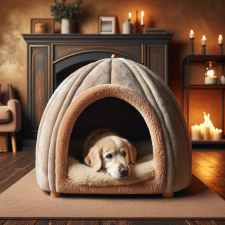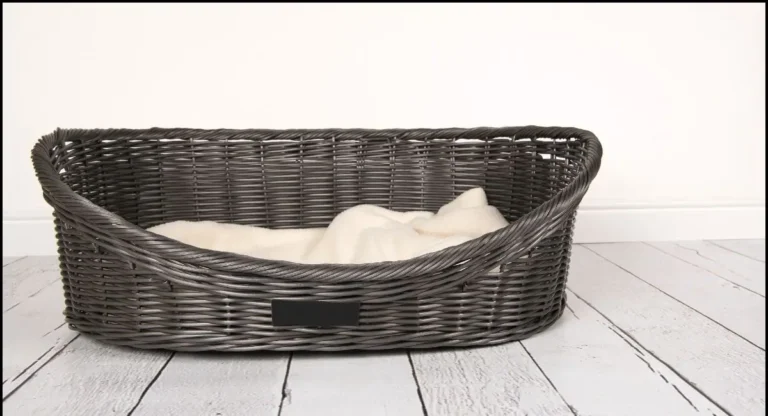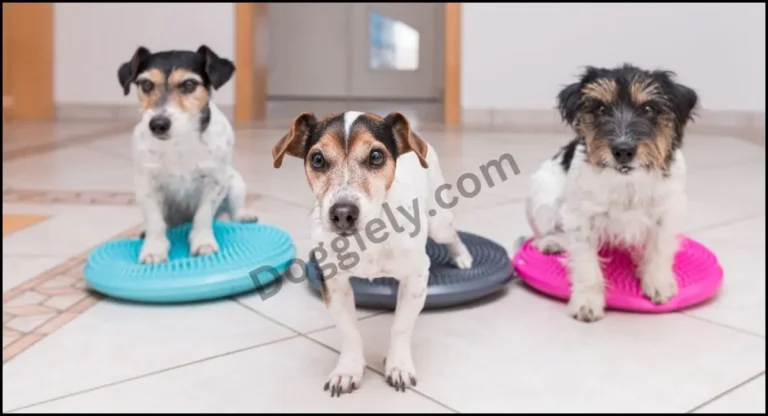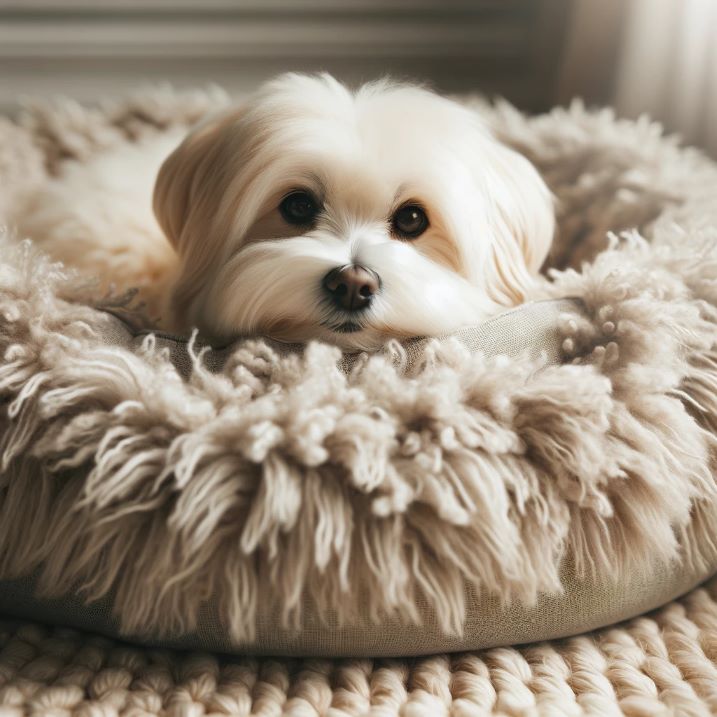dog cave bed, all you need to know

A dog cave bed, also known as a hooded dog bed, offers a unique and cozy sleeping solution for our canine companions. This type of bed is characterized by its enclosed design, which creates a cave-like space where dogs can curl up and feel secure. Inspired by a dog’s natural instinct to seek out small, enclosed spaces for rest and retreat, the dog cave bed caters to this desire for a snug and protected environment.
Unlike traditional open beds, a dog cave bed features an overhanging cover or hood that provides a sheltered area, mimicking the den-like atmosphere that many dogs instinctively crave.
This design is particularly beneficial for dogs who are anxious, easily startled, or simply prefer a more enclosed space for their rest. The enclosed structure not only offers a sense of security but also provides additional warmth and insulation, making it an ideal choice for colder climates or for breeds that are sensitive to the cold.
Dog cave beds come in various shapes, sizes, and materials to cater to the diverse needs and preferences of different dog breeds and their human companions.
From orthopedic options that support joint health to stylish designs that complement home decor, these beds offer a blend of comfort, functionality, and aesthetic appeal.
By understanding the concept of a dog cave bed, pet owners can make a more informed choice in selecting a bed that not only ensures their dog’s comfort but also enhances their overall well-being.
Benefits of Dog Cave Beds
Understanding these benefits can help pet owners make informed decisions about their dog’s comfort and well-being. Here are some key advantages of dog cave beds:
- Enhanced Comfort and Security: The enclosed design of a dog cave bed provides a snug and secure environment. This is especially beneficial for dogs who are anxious or easily stressed, as the sense of being enclosed can have a calming effect. The cave-like structure mimics a den, catering to a dog’s instinctual need for a safe and protected space.
- Improved Sleep Quality: Dogs, like humans, need quality sleep for their overall health. The sheltered environment of a dog cave bed can improve sleep quality by providing a dark, quiet space that’s free from drafts and disturbances.
- Warmth and Insulation: These beds are excellent for keeping dogs warm in colder weather. The enclosed space traps body heat, providing a cozy, warm area for your pet to rest. This is particularly beneficial for short-haired breeds or older dogs who may struggle to retain body heat.
- Support for Anxious or Fearful Dogs: Dogs with anxiety or fear issues, such as fear of loud noises or separation anxiety, may find the enclosed nature of cave beds soothing. The sense of being enclosed can help reduce stress and provide a safe refuge during anxious times.
- Health Benefits: For dogs with joint issues or arthritis, certain types of dog cave beds offer orthopedic support. The cushioning can relieve pressure on joints and make it easier for older or injured dogs to get comfortable.
- Privacy and Personal Space: Just like humans, dogs occasionally need their own space. A dog cave bed gives them a personal area where they can unwind without disturbance, which is particularly important in busy households.
- Versatility in Design and Material: Dog cave beds come in various materials, including memory foam, fleece, and more, catering to different needs. Whether you need a bed that’s easy to clean, hypoallergenic, or durable, there’s a wide range of options available.
- Aesthetic Appeal: Modern dog cave beds are designed not only for functionality but also to complement home decor. They come in various styles and colors, making it easy to find one that suits the aesthetics of your home.
- Beneficial for Small and Timid Dogs: Smaller breeds or timid dogs often feel more secure in a confined space. A dog cave bed provides the perfect retreat for these dogs, giving them a sense of security and comfort.
The Psychology Behind Why Dogs Love Cave Beds
Understanding why dogs are drawn to cave beds requires delving into their instincts and natural behaviors. This preference for cave-like environments is deeply rooted in the evolutionary history and psychology of dogs. Here’s an exploration of the key factors behind this preference:
1. Instinctual Denning Behavior
- Ancestral Roots: In the wild, many canine ancestors, like wolves, used dens for shelter, safety, and nurturing their young. This denning instinct is still present in domestic dogs.
- Safe Haven: Dens serve as a refuge from predators and harsh weather, offering a safe and secure place to rest. Cave beds replicate this environment, providing a similar sense of security.
2. Comfort and Warmth
- Cozy Enclosure: The enclosed space of a cave bed helps retain body heat, making it a warm and cozy spot, especially appealing in colder climates or for dogs with thinner coats.
- Soft Textures: Many cave beds are lined with soft materials, which add to the comfort and warmth, making them an attractive resting place.
3. Anxiety and Stress Reduction
- Enclosed Space: The confined space of a cave bed can have a calming effect on dogs, especially those with anxiety or nervous tendencies. It’s akin to the concept of swaddling a baby.
- Controlled Environment: In a cave bed, dogs can better control their immediate environment, which can be reassuring, reducing stress and promoting relaxation.
4. Privacy and Personal Space
- Own Territory: Just like humans, dogs appreciate having a space of their own. A cave bed provides a personal area where they can retreat and be undisturbed.
- Break from Stimulation: In busy households, a cave bed can offer a break from sensory overload, allowing dogs to decompress in peace.
5. Natural Curiosity and Exploration
- Exploring Small Spaces: Dogs are naturally curious and often enjoy exploring small spaces. A cave bed satisfies this curiosity, providing a novel and interesting environment.
- Playful Denning: For some dogs, a cave bed can also be a fun and playful space, adding an element of enjoyment to their daily routine.
6. Health and Well-being
- Joint Support: For older dogs or those with joint issues, the extra cushioning and support of some cave beds can provide much-needed relief.
- Sense of Routine: Having a designated sleeping area can contribute to a sense of routine and stability, which is beneficial for a dog’s overall well-being.
Types of Dog Cave Beds
Here’s the updated table with additional types of dog cave beds:
| Types of Dog Cave Beds | Different Materials Used | Variations in Style and Design | Considerations for Different Dog Sizes and Breeds |
|---|---|---|---|
| Standard Cave Bed | Fleece and Cotton | Hooded Dome | Small breeds like Chihuahuas, Pomeranians |
| Orthopedic Cave Bed | Memory Foam | Igloo Style | Large breeds with joint issues like Labradors, German Shepherds |
| Heated Cave Bed | Self-Warming Fabrics | Tent Style | Breeds prone to cold like Greyhounds |
| Elevated Cave Bed | Breathable Mesh | Sofa Style | Breeds prone to overheating like Bulldogs |
| Travel-Friendly Cave Bed | Water-Resistant Fabrics | Convertible Style | Portable for small to medium breeds |
| Luxury Cave Bed | High-Quality Leather | Designer Style | Sophisticated option for style-conscious owners |
| Eco-Friendly Cave Bed | Recycled Materials | Sustainable Design | Environmentally conscious owners, all breeds |
Here is a table showcasing various dog breeds and suitable types of dog cave beds for each:
| Dog Breed | Suitable Dog Cave Bed Type |
|---|---|
| Newfoundland | Waterproof and Spacious Cave Bed |
| Papillon | Lightweight and Elegant Cave Bed |
| Saint Bernard | Insulated and Large Cave Bed |
| Saluki | Slim and Long Cave Bed |
| Samoyed | Warm and Fluffy Cave Bed |
| Scottish Terrier | Stylish and Compact Cave Bed |
| Shar Pei | Skin-Friendly Soft Cave Bed |
| Tibetan Mastiff | High-Quality Spacious Cave Bed |
| Vizsla | Athletic Fit Cave Bed |
| Whippet | Streamlined and Comfortable Cave Bed |
| Akita | Heavy-Duty Fabric Cave Bed |
| Cavalier King Charles Spaniel | Luxurious Soft Fabric Cave Bed |
| Bernese Mountain Dog | Giant Size Orthopedic Cave Bed |
| Bloodhound | Odor-Resistant Cave Bed |
| Boston Terrier | Compact and Cozy Cave Bed |
| Bullmastiff | Extra Sturdy Cave Bed |
| Collie | Large and Soft Cave Bed |
| Dalmatian | Washable and Durable Cave Bed |
| English Bulldog | Breathable Cotton Cave Bed |
| Greyhound | Deep and Spacious Cave Bed |
| Irish Wolfhound | Extra-Large Orthopedic Cave Bed |
| Jack Russell Terrier | Elevated and Secure Cave Bed |
| Labradoodle | Hypoallergenic Designer Cave Bed |
| Mastiff | XXL Size Durable Cave Bed |
| Miniature Schnauzer | Small but Sturdy Cave Bed |
Top Rated Dog Cave Beds: A Comparative Review
Here are some of the top-rated cave dog beds, comparing their features, materials, and suitability for different breeds and needs.
1. The Cozy Fleece Cave Bed
- Features: This standard cave bed is made with ultra-soft fleece and cotton, ensuring maximum comfort. It’s designed with a hooded dome that provides a sense of security.
- Best For: Small to medium-sized breeds like Chihuahuas and Pomeranians. Ideal for dogs who prefer a soft, warm place to snuggle.
- Pros: Extremely soft, comfortable, and warm. Easy to clean and maintain.
- Cons: Not suitable for larger breeds or dogs with heavy chewing habits.
2. OrthoComfort Deep Dish Cuddler
- Features: An orthopedic cave bed crafted with memory foam. It offers enhanced support for joints and is perfect for older dogs.
- Best For: Older dogs, large breeds with joint issues, or any dog recovering from surgery.
- Pros: Provides excellent support, helps in alleviating joint pain, and is durable.
- Cons: Higher price point, and the size may not accommodate very large breeds.
3. Thermo-Mod Dream Pod
- Features: A heated cave bed, ideal for cold climates. It incorporates self-warming fabrics and a unique, modern design.
- Best For: Dogs prone to cold, such as Greyhounds or breeds with thin coats.
- Pros: Provides consistent warmth, unique design, and is energy efficient.
- Cons: Requires access to a power outlet, not suitable for dogs that chew on cords.
4. Elevated Comfort Air Bed
- Features: Combines the concept of an elevated bed with a cave design. Made with breathable mesh and a sturdy frame.
- Best For: Breeds prone to overheating, like Bulldogs or Pugs, especially in warmer climates.
- Pros: Promotes air circulation, easy to clean, and durable.
- Cons: Less insulated, may not be as cozy for colder climates.
5. Petego Umbra Portable Pet House
- Features: A travel-friendly cave bed made from water-resistant fabrics. It’s lightweight and easily portable.
- Best For: Pet owners who travel often with their small to medium-sized dogs.
- Pros: Easy to transport, durable, and versatile for indoor/outdoor use.
- Cons: Limited insulation and not ideal for larger breeds.
6. Luxury Leather Lounge Bed
- Features: Made from high-quality leather, this luxury bed is both stylish and comfortable. Features a designer style that fits well with modern home decor.
- Best For: Style-conscious owners who want a bed that complements their home.
- Pros: Durable, easy to clean, and aesthetically pleasing.
- Cons: Higher cost and not suitable for dogs that like to chew.
7. Eco-Friendly Sustainable Bed
- Features: Crafted from recycled materials, this bed is both comfortable and environmentally friendly.
- Best For: Environmentally conscious pet owners. Suitable for all breeds.
- Pros: Sustainable design, comfortable, and good for the environment.
- Cons: May be less durable than other materials.
Dog Cave Beds vs. Traditional Dog Beds
Here’s a comparative analysis table of Dog Cave Beds vs. Traditional Dog Beds:
| Criteria | Dog Cave Beds | Traditional Dog Beds |
|---|---|---|
| Comfort and Security | High (enclosed space provides comfort and security) | Moderate (open design, less enclosed) |
| Suitability for Anxious Dogs | Ideal (enclosed space can be soothing) | Less ideal (open space might not provide security) |
| Warmth and Insulation | High (better insulation due to enclosed design) | Moderate to low (less insulation due to open design) |
| Ease of Cleaning | Varies (dependent on material and design) | Generally high (most are easily washable) |
| Durability | Varies (dependent on material and build quality) | Varies (dependent on material and build quality) |
| Space Requirements | More (due to enclosed design) | Less (fits easily in most spaces) |
| Aesthetic Variety | High (wide range of designs and styles) | High (available in various designs and colors) |
| Cost | Varies (can be higher for specialized designs) | Generally lower (standard designs are more affordable) |
| Health Benefits | Good (some offer orthopedic support) | Varies (some offer orthopedic support) |
| Suitability for Different Breeds | Highly suitable for small to medium breeds, varies for larger breeds | Suitable for all breeds, especially larger ones |
How to Introduce Your Dog to a New Cave Bed
Introducing your dog to a new cave bed requires patience and understanding of your dog’s habits and preferences. The transition to a new bed can be a smooth process with the right approach. Here’s a guide on how to introduce your dog to their new cave bed:
1. Choose the Right Location
- Familiarity: Place the bed in an area where your dog already likes to relax. This could be where their old bed was or near a favorite spot in the house.
- Quiet and Safe: Ensure the location is quiet and away from high-traffic areas to make the bed feel like a safe retreat.
2. Introduce the Bed Gradually
- Familiar Scents: Before introducing the bed to your dog, rub a blanket or a piece of your clothing on it to transfer familiar scents.
- Encouragement: Gently encourage your dog to explore the bed by using a calm and happy voice. Avoid forcing them to go into it.
3. Use Positive Reinforcement
- Treats and Praise: Reward your dog with treats and praise when they show interest in the bed or go into it on their own.
- Favorite Toys: Place some of their favorite toys in or near the bed to create positive associations.
4. Make the Bed Appealing
- Comfort: Ensure the bed is comfortable. Adding a blanket or a pillow that your dog is already familiar with can help.
- Warmth: If the bed is in a cooler part of the house, consider a blanket or a warming pad to make it more inviting.
5. Be Patient and Consistent
- No Pressure: Allow your dog to explore the bed at their own pace. Some dogs may take a few days or even weeks to fully adapt.
- Consistency: Continuously encourage and reward your dog for using the bed. Consistency is key in forming a new habit.
6. Limit Other Options
- Remove Old Beds: If the goal is to transition completely to the new bed, consider removing older beds from the house.
- Close Off Other Areas: Temporarily restrict access to other cozy spots where your dog might prefer to sleep.
7. Observe Your Dog’s Behavior
- Adjustments: Pay attention to how your dog interacts with the new bed. You might need to make adjustments like changing its location or adding more padding.
- Health Concerns: If your dog seems uncomfortable or refuses to use the bed, it might be a sign of a health issue. Consult a veterinarian if you have concerns.
Maintaining and Cleaning Your Dog’s Cave Bed
Proper maintenance and cleaning are crucial for ensuring the longevity and hygiene of your dog’s cave bed. Regular care not only keeps the bed in good condition but also ensures a healthy environment for your pet. Here are some guidelines for maintaining and cleaning your dog’s cave bed:
1. Regular Inspection
- Check for Damage: Regularly inspect the bed for signs of wear and tear, such as loose threads, tears, or holes. Address these issues promptly to prevent them from worsening.
- Spot Clean Stains: Address spills and stains immediately by spot cleaning. This prevents the stain from setting in and becoming harder to remove.
2. Vacuuming and Dusting
- Remove Hair and Dirt: Use a handheld vacuum or a lint roller to remove pet hair, dirt, and debris from the bed. This should be done frequently, especially if your dog sheds a lot.
- Dust Off the Cover: Gently dust off the exterior and interior of the bed to remove any loose dirt or dust.
3. Washing the Bed
- Follow Manufacturer Instructions: Always check the care label for specific washing instructions. Some beds are machine washable, while others require hand washing.
- Use Dog-Friendly Detergents: Use mild, pet-safe detergents to avoid irritating your dog’s skin. Avoid using strong chemicals or bleach.
- Air Dry Thoroughly: After washing, ensure the bed is completely dry before allowing your dog to use it again. Dampness can lead to mold and mildew growth.
4. Deodorizing the Bed
- Baking Soda: Sprinkle baking soda on the bed and let it sit for a few hours before vacuuming it off. Baking soda is a natural deodorizer and is safe for pets.
- Pet-Safe Deodorizers: Use pet-safe deodorizing sprays to help eliminate odors. Avoid products with strong fragrances that might irritate your dog.
5. Regular Replacement of Bedding
- Replace Bedding: If the bed has removable cushioning or bedding, consider replacing it periodically, especially if it becomes too flat or loses its shape.
- Washable Covers: If the bed has a removable cover, wash it regularly. Having a spare cover can be handy while one is being washed.
6. Handling Mold and Mildew
- Prevent Moisture Buildup: Keep the bed in a dry area to prevent mold and mildew. If you notice any signs of mold, clean the bed thoroughly with a vinegar and water solution.
7. Safe Storage
- Proper Storage: If the bed is not in use for an extended period, store it in a clean, dry place to prevent dust accumulation and damage.
Regular maintenance and cleaning are essential for the durability and hygiene of your dog’s cave bed.
Dog Cave Beds and Allergies: Hypoallergenic Options
For dog owners dealing with allergies, either in themselves or their pets, choosing the right dog bed is crucial. Hypoallergenic dog cave beds can play a significant role in reducing allergen exposure. Here’s an overview of hypoallergenic options and considerations for dog cave beds in relation to allergies:
1. Understanding the Allergy Issue
- Common Allergens: Allergens in dog beds can include pet dander, dust mites, mold spores, and pollen.
- Sensitive Dogs: Some dogs may be allergic to certain materials or may develop skin irritations from non-hypoallergenic fabrics.
- Sensitive Owners: Allergen accumulation in dog beds can also affect owners who have allergies, making hypoallergenic beds a wise choice for the household.
2. Hypoallergenic Materials
- Synthetic Fabrics: Materials like polyester and microfiber are less likely to attract and retain allergens compared to natural fibers.
- Non-Porous Surfaces: Beds with non-porous materials can prevent dander and mites from settling in.
- Natural Hypoallergenic Options: Some natural fabrics like bamboo or certain tightly woven cottons can also be hypoallergenic.
3. Design Considerations
- Removable Covers: Hypoallergenic dog cave beds with removable covers are easier to clean regularly, reducing allergen accumulation.
- Water-Resistant: Water-resistant beds can prevent the accumulation of mold and mildew, common allergens in homes.
4. Maintenance and Cleaning
- Regular Washing: Wash the bed and its cover frequently in hot water to kill dust mites and remove allergens.
- Vacuuming: Regularly vacuuming the bed can help remove pet hair and dander.
5. Air Circulation
- Breathable Design: Ensure the cave bed allows for good air circulation to prevent the buildup of humidity, which can exacerbate allergies.
6. Allergen-Proof Liners
- Protective Covers: Consider using allergen-proof liners inside the bed to create an additional barrier against dust mites and other allergens.
7. Choosing the Right Bed
- Research: Look for beds specifically labeled as hypoallergenic. Read reviews and product descriptions carefully.
- Consult with Veterinarians: If your dog has allergies, consult with a veterinarian to determine the best bed material.
8. Considerations for Human Allergies
- Placement: Place the dog bed in an area that minimizes the impact on allergic family members, such as a room with less foot traffic or easier-to-clean floors.
Multi-Dog Households: Managing Space with Dog Cave Bed
In multi-dog households, managing space efficiently while ensuring each dog has its own comfortable spot can be challenging. Dog cave beds can be an excellent solution, offering individual resting places that are cozy and space-efficient. Here’s a guide on how to effectively use dog cave beds in homes with multiple dogs.
1. Personal Space for Each Dog
- Individual Beds: Provide each dog with their own cave bed to ensure they have a personal space. This is particularly important for dogs that may need alone time or are territorial about their sleeping area.
- Size Appropriateness: Choose beds that are the right size for each dog, ensuring they have enough room to stretch and turn comfortably.
2. Strategic Placement of Beds
- Separate but Social: Place the beds in areas where the dogs can still see and interact with each other if they choose, fostering a sense of companionship.
- Quiet Corners: For dogs that prefer solitude, position their cave beds in quieter, more secluded parts of the house.
3. Maximizing Space
- Space-Saving Designs: Look for cave beds that can fit into corners or against walls to maximize floor space. Some designs are stackable or can be easily moved.
- Multi-Functional Furniture: Consider beds that can double as furniture, like ottomans or benches, which can save space and blend with home decor.
4. Maintaining Harmony
- Introduce Beds Simultaneously: Introduce new beds to all dogs at the same time to avoid jealousy or territorial disputes.
- Bed Training: Train each dog to use their own bed. Use positive reinforcement to encourage them to go to their specific bed.
5. Cleaning and Hygiene
- Regular Cleaning: With multiple dogs, cleanliness is key. Choose beds with washable covers and materials that are easy to clean.
- Disease Control: Regular cleaning also helps in controlling the spread of fleas, ticks, and other parasites.
6. Dealing with Dominance and Sharing
- Monitor Interactions: Observe how the dogs interact with their beds. If one dog tries to take over another’s bed, it may be necessary to reinforce training or rearrange the sleeping areas.
- Respect Individual Preferences: Some dogs may enjoy sharing their space occasionally. Respect their individual preferences while ensuring each has its own bed.
7. Adapting to Changes
- Flexibility: Be prepared to rearrange beds as relationships and dynamics in the pack change.
- Special Needs: Consider the special needs of any elderly or infirm dogs, placing their beds in easily accessible locations.
Creative Placement Ideas for Dog Cave Beds in Your Home
Integrating dog cave beds into your home decor while ensuring your pet’s comfort can be both fun and functional. Creative placement not only enhances the aesthetic appeal of your living space but also caters to your dog’s needs. Here are some innovative ideas for positioning dog cave beds in your home:
1. Living Room Lounging
- Near Family Activity: Place the cave bed in a corner of the living room where your dog can still observe family activities without being in the way of foot traffic.
- Under Coffee Tables: Utilize the space under a coffee table for a snug dog cave bed, making it a cozy nook that’s part of the living area.
2. Bedroom Retreat
- Beside Your Bed: If your dog sleeps in your bedroom, place their cave bed beside your bed. This allows closeness while providing them with their own space.
- Window Views: Position the bed near a window in your bedroom, so your dog can enjoy looking outside, which can be calming and entertaining.
3. Quiet Corners
- Peaceful Nooks: Identify quiet corners in your home, such as in a home office or a seldom-used guest room, where your dog can retreat for uninterrupted rest.
- Bookshelf Alcoves: Utilize the lower shelves of a bookcase or alcove to tuck in a dog cave bed, creating a hidden and quiet resting place.
4. Kitchen Companionship
- Under the Island: If you have a kitchen island, the space underneath can be a perfect spot for a dog cave bed, keeping your dog close during meal preparations.
- Against Cabinetry: Fit the bed against a less-trafficked area of your kitchen cabinetry, ensuring your dog can relax safely while being near the family.
5. Outdoor Oasis
- Sheltered Patio Areas: For dogs who enjoy being outdoors, place a weather-resistant cave bed in a sheltered area of your patio or balcony.
- Garden Hideaways: Create a special nook in your garden where your dog can enjoy the outdoors while lounging in their cave bed.
6. Hallway Hangouts
- Entryway Space: Utilize a small space in your entryway or hallway for a dog cave bed, giving your dog a spot to greet you when you come home.
- Under Staircase: The space under a staircase can often be transformed into a cozy resting area with a cave bed.
7. Multipurpose Furniture
- Beneath Raised Furniture: Consider raised furniture like benches or tables with space underneath where a cave bed can fit.
- Custom Solutions: Some furniture pieces can be custom-built to include a dog cave bed as part of the design, blending seamlessly with your home decor.
Conclusion
In conclusion, a dog cave bed is a thoughtful addition to your pet’s life, offering comfort, security, and health benefits.
By considering factors like comfort, health, suitability, style, and maintenance, you can select the perfect cave bed that your dog will love and use for years to come. Remember, the right bed can significantly enhance your furry friend’s overall well-being and happiness.
faq
1. What is a Dog Cave Bed?
- Answer: A dog cave bed is a type of pet bed that features an enclosed design, creating a cave-like, sheltered environment. This design offers a sense of security and privacy, often preferred by dogs who enjoy burrowing or nesting.
2. Are Dog Cave Beds Suitable for All Dog Breeds?
- Answer: While dog cave beds are particularly popular with smaller breeds and burrowing dogs like terriers, they come in various sizes and designs suitable for most breeds. However, larger breeds might require specially sized cave beds.
3. Why Do Some Dogs Prefer Cave Beds?
- Answer: Many dogs prefer cave beds because they mimic the den-like environment of their wild ancestors. The enclosed space provides a sense of security, helps reduce anxiety, and can keep them warm and comfortable.
4. How Do I Choose the Right Size Bed for My Dog?
- Answer: Measure your dog from nose to tail while they are sleeping and add a few inches to determine the bed size. Ensure that the bed is spacious enough for your dog to stretch out and turn around comfortably.
5. Are Cave Beds Good for Dogs with Anxiety?
- Answer: Yes, the enclosed and snug design of cave beds can provide a safe and secure space for anxious dogs, helping to soothe and calm them.
6. How Do I Clean a Dog Cave Bed?
- Answer: Most dog cave beds come with removable covers that can be machine washed. It’s important to follow the manufacturer’s instructions. For beds without removable covers, spot cleaning and airing out the bed are recommended.
7. Can I Travel with a Dog Cave Bed?
- Answer: Some dog cave beds are designed for portability, featuring lightweight and collapsible designs that are ideal for travel.
8. Are Dog Cave Beds Warm Enough for Winter?
- Answer: Many dog cave beds are made with warm materials and offer excellent insulation, making them suitable for colder climates. However, for extremely cold conditions, consider a heated bed or additional blankets.
9. Can Puppies Use Cave Beds?
- Answer: Yes, puppies can use cave beds. However, ensure that the bed is the appropriate size and doesn’t have any small parts or decorations that a puppy could chew off and swallow.
10. How Often Should I Replace a Dog Cave Bed?
Answer: The lifespan of a dog cave bed depends on its quality and how it’s maintained. Regular cleaning and inspections for wear and tear are essential. Replace the bed if it becomes too worn or if it no longer provides the support and comfort your dog needs.
Related Posts:
Read More: Why Does My Dog Open His Mouth When I Pet Him? 7 Reasons
Read More: Why Does My Dog Keep Sniffing My Legs: 5 Common Reasons
Read More: Why Does My Dog Bite Me In The Morning? 2 Way To safe From
Read More: Why Are My Dogs Balls Black? Best Number 1 Answer
Read More: Why Do Dogs Like Peanut Butter?
Read More: Why Does My Dog Nibble My Ear? 10 Reasons
Read More: Why Does My Dog Move Its Bed Around?
Read More: Why Does My Dog Bring Me His Food?
Read More: Why Does My Dog Lay His Head Over My Neck? 7 Reasons





